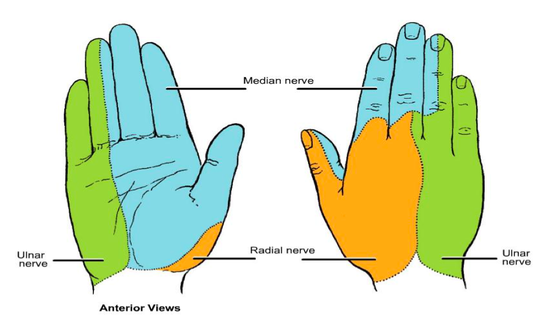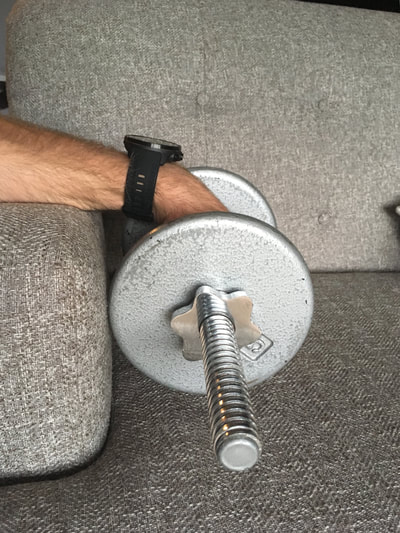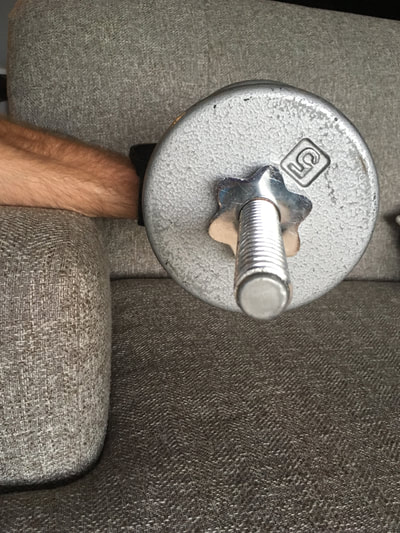Even Physiotherapists get Injured... I've been afflicted by, and recovered from dozens of injuries over my lifetime. Through this process I've acquired humility, experienced an endless variety of pain and learned a whole lot about what constitutes effective rehab! I wrote this article in the hope of sharing how I executed my own rehabilitation from carpal tunnel, and to share a few ideas for anyone currently dealing with carpal tunnel. Day 0 - Doomsday! Client History I had absolutely no idea that I would walk away from a casual day of rock climbing with carpal tunnel symptoms. While I had rock climbed less than 15 days in the previous 6 months, I had gone ice and mixed climbing over 60 days in that same time period. My typical week would consist of the 3-4 days of climbing, 1 day of weights in the gym, 1 day of core, and 2 days of mobility work. So what's my point? I was active and was not dealing with any injuries. Mechanism of Injury While leading a relatively easy route in Cougar Canyon, I found myself at the bottom of the crux: An overhang with a larger sloper, that would transition to a mantle. The problem of the route, was that you really had to get high on the sloper in order to find the higher hand placement, so that you could switch the a mantle position, and as a result my hand and wrist position looked like this: In all reality, I didn't make it to the position shown in the second photo, but this would have been the goal. Instead I exerted effort through the position shown in the first picture multiple times, ignoring the warning signs of slight numbness and tingling into my hand for about 5 minutes of effort and attempts. Leaving the crag, my finger sensation felt impaired and the palm of my hand felt a bit sensitive. I thought that it only needed a couple days of rest - I was wrong! Diagnosis: Carpal Tunnel Syndrome (secondary to (1) flexor digitorum profundus and superficialis tendinitis and (2) sprain of the transverse carpal ligament). Prognosis (how long until injury is healed): On the day of injury, I had no idea! There was no pain, but the numbness was concerning. From my experience, any injury involving nerves is likely to take several weeks to several months. Carpal Tunnel Syndrome requires careful treatment and avoidance of aggravating positions, or it can turn into a chronic injury that may even require surgical intervention. Day 1 - 3 Numbness and tingling of my hand matched the pattern of median nerve distribution and the symptoms continued to get worse during these first few days. As the mechanism of my injury was one of overuse with compression, I would theorize that my carpal tunnel symptoms were likely caused by a tendonitis involving at least a few of the four flexor digitorum profudus and four flexor digitorum superficialis tendons. The space in which the tendons are contained in the carpal tunnel is not forgiving. There is very little space for inflammation, or thickened tendons (that may result from the local inflammation). This is why, in chronic or severe cases, a surgeon may cut the transverse carpal ligament in an effort to decrease any compression underneath of it. For these first few days I followed this treatment regime: 1) Avoided using my hand as much as possible at work and in my life. Purchased a wrist splint to sleep with and use when possible to keep wrist in a neutral position. 2) Ice packs applied to palm of hand and carpal tunnel = 3-5 times a day for 10 minutes 3) Massage of forearms with moderate pressure = 2 times a day for 5 minutes 4) Stretching wrist into extension with variations of elbow straight and elbow bent = 10 times a day for 15-30 seconds 5) Ibuprofen = 3 times a day using 400mg Note: All exercises and stretching were done to sub-symptom thresholds - AKA I did not aggravate my symptoms! Day 4 - 14 It was only after four days that it finally sunk in: Progress would be slow. This is quite common with carpal tunnel due to the combination of nerve irritability when inflammation is present, the length of time required to rehabilitate tendons, and the required use of the hand/fingers in most daily activities. Updated Prognosis: 3-9 months I advanced my rehab program to include the following: 1) Return to normal exercise programming as able: Lifting weights with lower body in the gym, hiking/biking 45-90 minutes each day. 2) Ice pack and hot packs applied to palm of hand and carpal tunnel = 3 times a day for 10 minutes each. 3) Massage of forearms with moderate to hard pressure = 2 times a day for 5 minutes. Also purchased an "Arm Aid" to help aid in future release of forearms over the upcoming weeks. 4) Released pec minor and back of shoulder with a lacrosse ball, due to having postural tightness on the left shoulder girdle - 1 time a day for 3 minutes each. 5) Stretching wrist flexors by going into wrist extension with variations of elbow straight and elbow bent = 10 times a day for 15-30 seconds 6) Isometric wrist flexion: 5 days a week - 3 sets of 8 reps. 5 seconds on, 10 second off. I standardized this by holding a dumbbell, and gradually increasing the weight. This exercise was important to start with very light weights, yet in the first week after injury, to encourage the tendons that pass through the wrist to start adapting to small amounts of load again. See photos below. 7) Resisted wrist extension and radial deviation. 5 days a week - 3 sets of 8 reps each. These exercises would develop muscular effort within the forearm, without irritating the structures within the carpal tunnel. See photos below. 8) Median nerve glides - 5 times a day for 15 reps. 9) Diclofenac gel = Applied 3 time a day to carpal tunnel and palm of hand Week 2 - 6 After completing 2 weeks of rehab exercises, my focus switched to strength training in the gym for one month. Each strength session was separated by at least 48 hours of rest, and I continued a selection of the above bullet points (# 1, 3 and 5). I returned to a progressive strengthening program inclusive of most exercises, but set three rules: (1) Ensure a neutral wrist (no wrist movement permitted in any loaded exercises), (2) No excessive pressure allowed to be placed on the carpal tunnel, and (3) No excessive amount of strain placed on the finger or wrist flexors. A few examples of exercises that I omitted were: (1) weighted pull ups (2) Heavy Rows, and (3) push ups. Additionally, each exercise session included isotonic (normal) wrist flexion, wrist extension, supination/pronation, and radial deviation exercises using a dumbbell. I would perform 3 sets of 8, taking 5 seconds for the concentric and eccentric phase, and allow 3 minutes of rest in-between each set. My goal was to develop load tolerance of the tendons, without causing any inflammation/irritation. Week 6+ I was comfortable performing nearly all exercises in the gym now, so at week 6, I returned to rock climbing. At first I started slowly in the climbing gym, and only committed to moves that allowed me to maintain a neutral wrist. I kept both the intensity and duration low for the first month. After 4 weeks of climbing inside, I returned to climbing outside with no worsening of my symptoms. Conclusion It has been 4 months since the initial injury, and my sensation still remains slightly impaired: I would give it a grade of 95%. Some things take time... and nerves are said to heal at a rate of 1 mm/day. From my carpal tunnel to the tip of my middle finger is 22cm long. That means it may take 220 days (or over 7 months) to see full resolution.
We may wish that healing could take place overnight, but nearly all rehab plans contain a common theme: Time, strengthening, mobility work, and a careful return to sport.
3 Comments
Filip
5/23/2022 11:08:09 am
Many thanks for this article Jacob! I just returned back from a climbing trip and I think I have CTS in my right arm. This gives me hope that there is a way out and I will be able to climb again.
Reply
Jacob
5/23/2022 10:26:39 pm
My pleasure, Filip!
Reply
Leave a Reply. |
Have you found these article to be informative, helpful, or enjoyable to read? If so, please visit my Facebook page by clicking HERE, or click the Like button below to be alerted of all new articles!
Author
Jacob Carter lives and works in Canmore, Alberta. He combines research evidence with clinical expertise to educate other healthcare professionals, athletes, and the general public on a variety of health topics. Archives
November 2022
Categories
All
|
|
|













 RSS Feed
RSS Feed